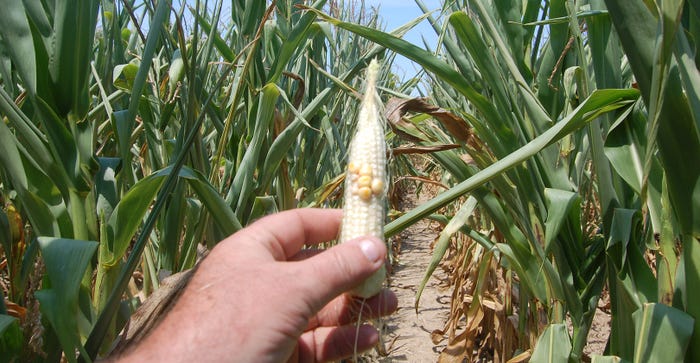
If you don’t like the way the corn crop is shaping up this year, here’s a not-so-subtle reminder that things can always be worse. A few pictures from the 2012 season, remembered as the most recent year of widespread drought in the Midwest, should jog your memory. These also serve to rekindle the debate of whether your farm does better in a year that is way too wet or way too dry.
Some people harvested fairly good yields in 2012. Others put whole fields into one truckload. Don’t look now, but it’s possible some will say the same about 2019 once the year is finally over. The difference is that virtually every field was planted in 2012, and many of them early. That compares to record prevented planting acres for several eastern Corn Belt states in 2019.
The 2012 season featured a warm, fast start that gave way to a blistering hot, bone-dry June and July in many areas. Rain came back, but far too late in many cases. Compare that to 2019, which started at nearly a record slow pace due to too much rain, but which also bubbled up into drought in some parts of the state by early August. The final chapter for 2019 is yet to be written.
Bob Nielsen, Purdue University Extension corn specialist, says there may be some problems with pollination in fields that pollinated under drought stress in early August. There could also be kernel abortion, which usually starts at the ear tip. The problem in 2019 is that compacted soils and limited rooting allowed stress from lack of rain to show up quickly, Nielsen observes.
There were plenty of pollination problems and kernel abortion in 2012, as well. If you’ve forgotten, these accompanying pictures, primarily taken from the Corn Watch field in 2012, will remind you. Composed of varying soil types, the field that year ranged from under 5 bushels per acre to over 125 bushels per acre, averaging around 55 bushels per acre.
About the Author(s)
You May Also Like




